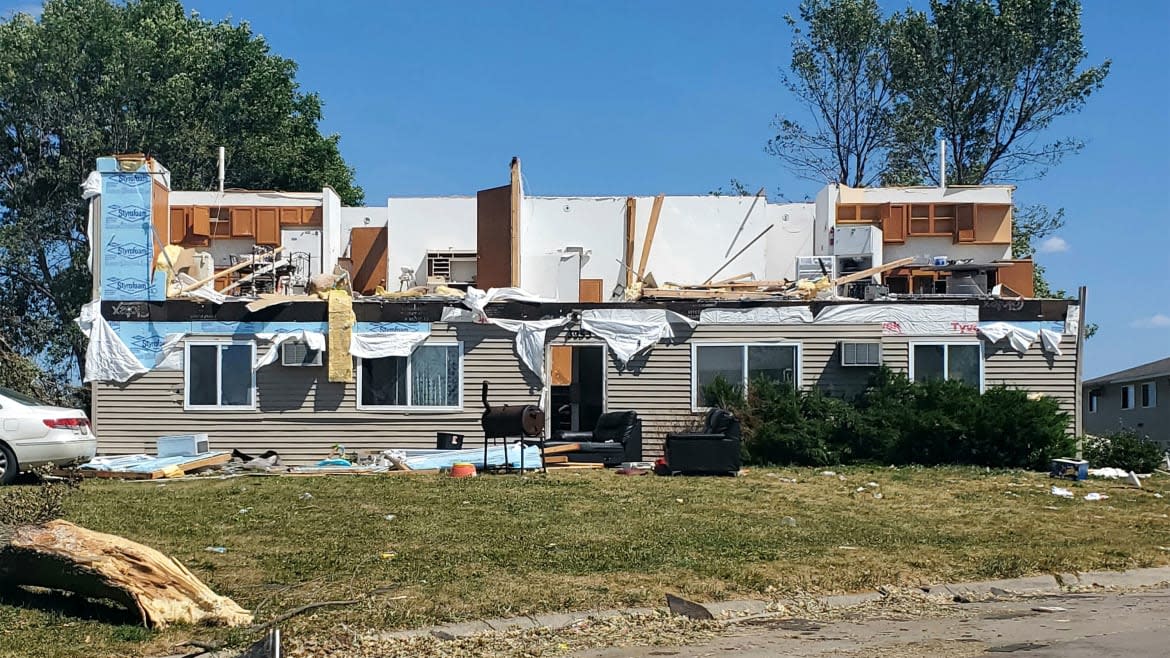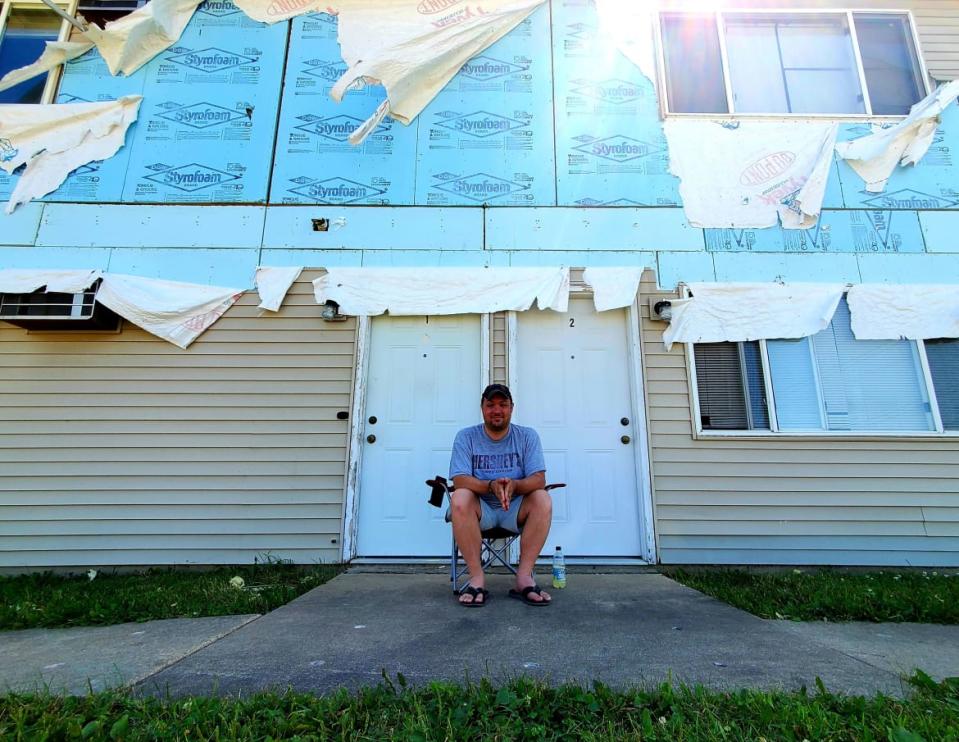Scared in the Dark: Iowa Pleads for Feds 6 Days After Shock Storm

CEDAR RAPIDS, Iowa—Jessica Tennyson, 34, stays inside her apartment on the southeast side of town as long as she can at night.
Eventually, though, the heat is too much for her to bear, and she has to step out into the pitch-black street.
“I’m always afraid that one of these times I’m going to be sitting out on my porch and somebody’s just going to go bang, bang bang,” Tennyson told The Daily Beast as she held up her fingers in a way that mimicked a gun. “And I can’t see where I’m going or where I can run.”
Tennyson’s neighborhood hasn’t had power since a powerful derecho, a line of fast-moving windstorms, brought hurricane-force winds into the middle of the country on August 10. Six days after the storm erupted, some Iowa residents said it was taking far too long for the feds to come to the rescue in a region where massive damage to corn crops could wreak long-term havoc.
Others were just trying to get used to their new normal.
The local police department patrols Tennyson’s neighborhood regularly, passing by her house every ten minutes or so between 10 p.m. and daylight, since there’s a city-wide curfew in place.
“They’re trying to enforce the curfew, but at the same time, when you see their car lights on it's a very eye-opening situation where they feel they have to patrol every 10 minutes,” she said. “It puts me on edge. And I know they're there to protect their best interest, but it can be unnerving.”
Cedar Rapids residents only had about an hour to prepare for the storm after it knocked out power in Des Moines Monday morning. A derecho is rare enough in Iowa that many residents say they’d never heard the word until after the storm.
Jerry W. Frajman, a 66-year-old who lives about a mile from downtown Cedar Rapids, was watching the second episode of the old TV show The Beverly Hillbillies when the wind started blowing at speeds that topped 100 mph.
“Everything started flickering,” Frajmin recalled. “And then the power went off and it has been off ever since.”
More than 135,000 people were without power in Linn County after the storm hit Monday, and according to poweroutage.us, as of Sunday evening, at least 46,000 residents were still waiting to get their power restored.

Gary Watson, 40, who was in his ground-level apartment building when the storm swept through, was sitting outside his apartment door Sunday afternoon. He said his building has technically been deemed unsafe, since the siding was ripped off and smelly storm water has been dripping in all week.
He said he had nowhere else to go.
All of his perishable food has spoiled and he hasn’t been eating much, even though he’s been offered plenty of food from local volunteers, Watson said. He hasn’t been hungry because of all the stress.
“It’s probably not good because I’m a Type 2 Diabetic,” Watson added.
He’s hopeful his power will be back on in the next three days, since Alliant Energy has been telling residents most of the city’s power should be returned by Tuesday.
Until then, Watson planned to spend most of his days sitting outside on his red fold-up lawn chair.
Some residents were skeptical that the power would return that quickly. Power lines were still hanging down in the middle of some city streets, and massive trees still collapsed on top of others.
Joe Hendryx, 38, said his parents had been without power all week. He’s been bringing them food and cold water and things to keep them busy since they can’t leave their home due to fears of infection from COVID-19.
On Thursday, State Senator Liz Matthis, of Cedar Rapids, announced during a news conference that 100 national guard members would help the town with cleanup. And on Sunday evening, Iowa Governor Kim Reynolds formally requested an expedited Presidential Major Disaster Declaration. According to a news release from the governor’s office, the state requested nearly $4 billion to recover from the storms, which some estimates suggested had endangered a third of the state’s corn crop.
“I don’t know why we’re waiting to determine we need help,” Hendryx said. “What more proof do people need to see that we need help. It has been frustratingly slow.”
By Sunday, FEMA had already approved Iowa’s request to take part in the Lost Wages Program, which will give Iowans who were receiving unemployment benefits an additional $300 each week after a $600 pandemic benefit created by Congress expired. But it was hard for some residents to shake the feeling that they were being left out to dry.
“I think it’s been amplified because of this whole COVID thing because we already felt bored and restless and listless,” Hendryx said. “I just feel like there’s got to be so many things that I can do—and that should be done.”
Got a tip? Send it to The Daily Beast here
Get our top stories in your inbox every day. Sign up now!
Daily Beast Membership: Beast Inside goes deeper on the stories that matter to you. Learn more.

